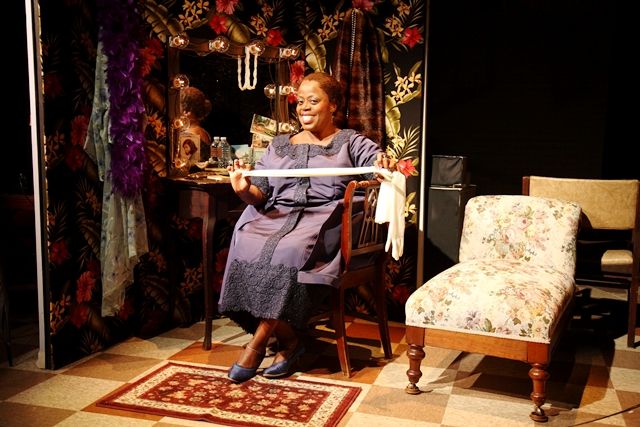Big Maybelle: Soul of the Blues at Bay Street

Louis Armstrong, when asked by a (white) reporter to define jazz, is said to have quipped, “Man, if you have to ask what it is, you’ll never know.” Whether he said it or not, it’s a great quote, cleverly getting at the ineffable yet widely conceded differences between “black” and “white” modes of expression.
When it comes to the early blues, the archetypal black music, you’ll hear people tempted by biographical explanations. Call it the biographical fallacy: the music sounds that way because it’s the music of an oppressed people, the performers lived hard lives, drinking too much, gambling and hanging around with loose women, or even selling their souls to the devil. Not only does this explanation reek of cultural stereotyping, but it also ignores the obvious. That is, the blues was (and is) a STYLE, cultivated by gifted performers and wildly popular with black audiences through the 1950’s. Black performers worked harder at it and got better at it because it’s what their audience liked. They evolved idiosyncratic, virtuosic ways of singing and playing, as well as vivid stage personas that complemented the style. Though many might have engaged in dangerous behavior offstage, or battled personal demons, this was probably attributable to the hazards of the life of any professional performer. For them, the blues was a job.
Big Maybelle: Soul of the Blues, playing through September 2 at Bay Street Theatre in Sag Harbor, dramatizes the life and career of the blues singer Maybelle Smith, dubbed “Big Maybelle” because, well, she was big. As Big Maybelle, the fabulous Lillias White belts out some great blues, many written by or originally recorded by Maybelle Smith, accompanied by a cracker-jack onstage band. In what is practically a one-woman show, White gives the audience a taste of what it must have been like to see one of the great blues performers of the 50’s, complete with vocal flourishes, high-energy delivery, and even audience participation. White’s performance is a dazzling tour de force.
Unfortunately, her performance is tethered to a script that threatens to sink the show at any moment. Not much is known about Smith, and so the biographical details presented in the show are a mix of what is known and storylines of what the program calls “several iconographic characters.” The result is the biographical fallacy described earlier, taken way beyond the realm of the plausible. The writer, Paul Levine, appears to me to have taken a mass of clichés about female blues singers and placed them on Smith: she’s grandly promiscuous, runs with a pimp, snorts heroin, drinks heavily, and is often depressed about these and other problems. The root of her troubles, the script suggests, is self-esteem issues related to her weight. Fair enough.
The problem is that Levine has basically invented this back-story for Smith, and he seems to be encouraging us to believe that Smith was a great blues singer because of the difficult life she lead. We don’t hear about practicing her act, we don’t hear about writing songs, we don’t know how she learned to do what she did. The show perpetuates assumptions about musical creation and performers’ development that verge on the insulting. It’s not that you can’t sing the blues if you haven’t lived the blues – you can’t sing the blues if you DON’T KNOW HOW.
Luckily, Lillias White DOES know how to sing the blues, and she saves the show. The beginning of the second act is especially good, as she introduces the band and the show becomes more like a concert. They should lose the rest of the script, and just let her sing all night.
Big Maybelle: Soul of the Blues, playing through September 2 at Bay Street Theatre in Sag Harbor, www.baystreet.org, 631-725-9500.



